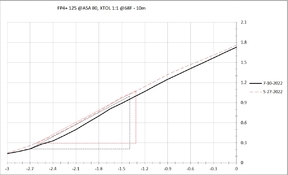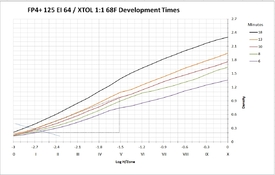Sirius Glass
Subscriber
Sirius, that's wrong.
Not only middle gray value and optimal EI change with extended development: even shadows do, in a small amount.
You can see it yourself the day you decide to do that homework.
Speed depends also on the developer.
Juan,
Extending development does not increase film speed (aka sensitivity to light) appreciably.
It does alter the characteristic curve though, which can result in more usable results from exposure that is less than optimum.
As Matt noted, the speed increase is so small that it is not noticeable and can only be shown it best. In real life, there is no noticeable difference.













